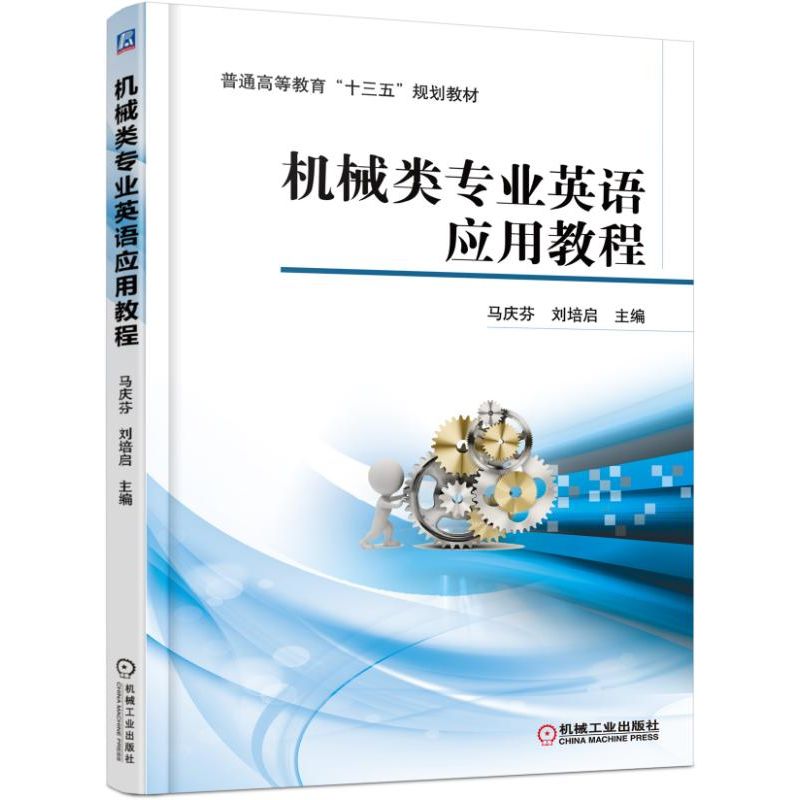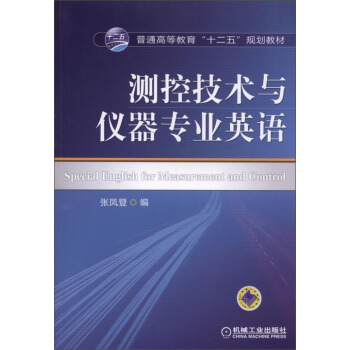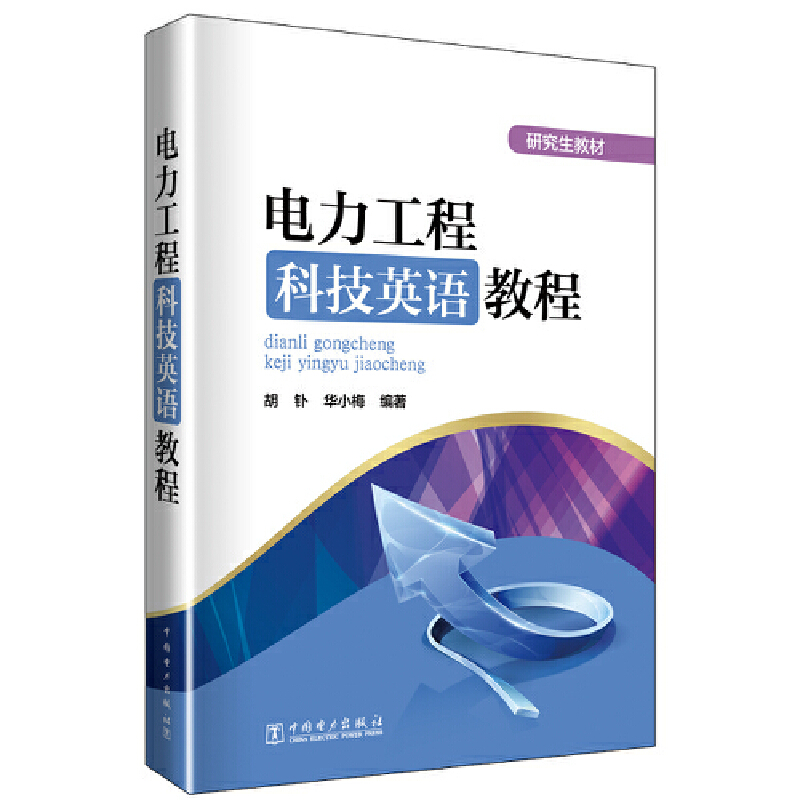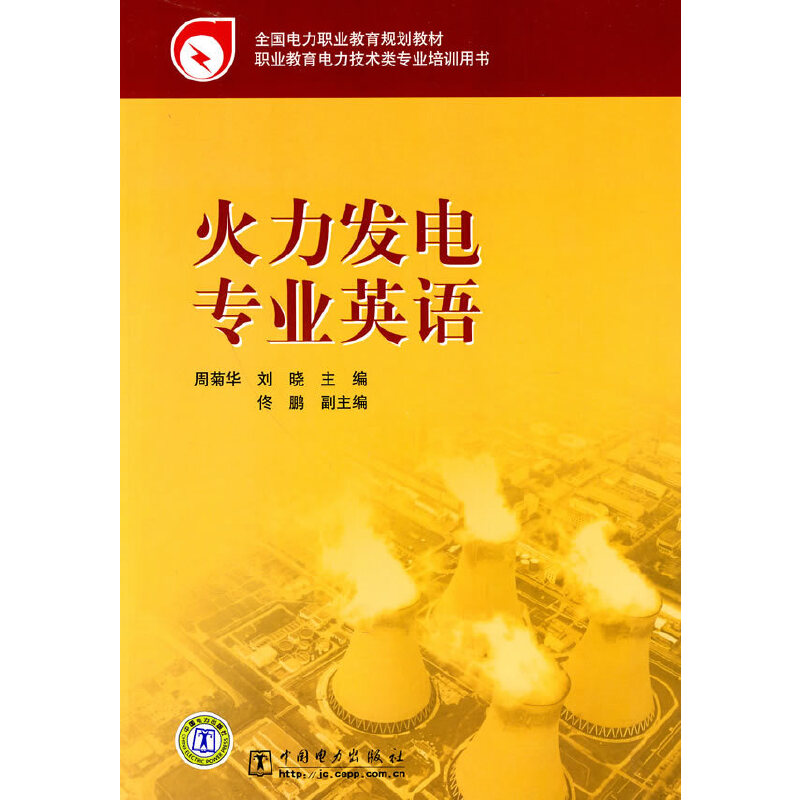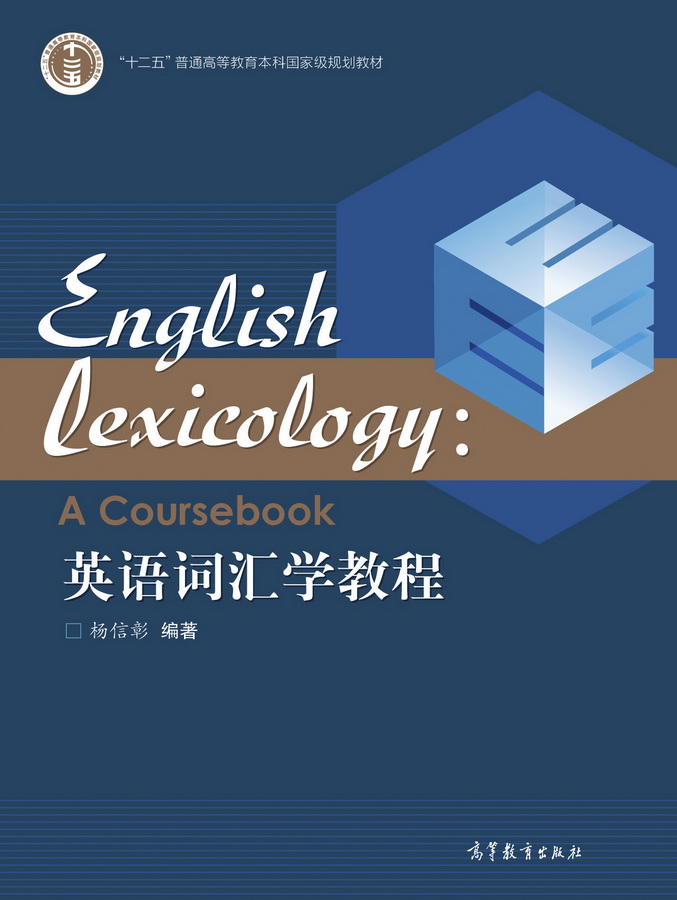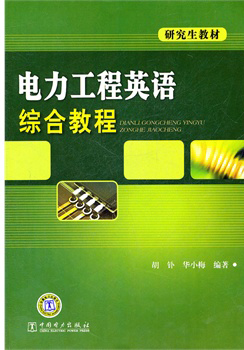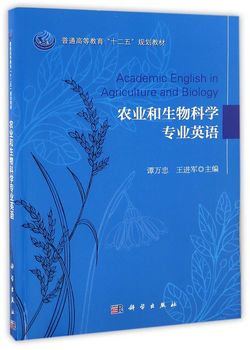- 机械工业出版社
- 9787111538875
- 1-4
- 148587
- 48268762-1
- 平装
- 16开
- 2017-01
- 434
- 288
- 工学
- 机械类
- TH-43
- 机械设计制造及其自动化
- 本科
内容简介
本书的目的是使读者掌握机械类专业英语的基本知识、主要学习方法和技巧,培养和提高读者阅读、翻译专业英语文献资料及综合运用专业英语的能力。本书设置了理论和实践两个环节,可满足学生为主体的课堂设计和情景教学。本书的主要内容包括16章,分为四部分:基础知识、阅读理解、口语训练和团队合作以及写作训练,不仅提供了机械制图、机械设计、机械制造等多种机械类专业知识的阅读素材、配备了难句解析和专业词汇释义,还详解了专业英语应用中涉及到的阅读、翻译、口语、写作等方面的方法与技巧。本书可作为机械类专业及各种机械相关专业的专业英语教材,也可以供机械工程相关领域的工程技术人员参考使用。
目录
前言
Part 1 专业英语基础知识
Unit 1 专业英语的特点
1.1 概述
1.1.1 什么是专业英语?
1.1.2 学习专业英语的重要性
1.1.3 本书的主要内容及使用建议
1.2 词汇特点
1.2.1 词汇分类
1.2.2 词汇构成
1.2.3 词汇缩略
1.2.4 数词、公式和符号
1.3 语法特点
1.3.1 被动语态的广泛使用
1.3.2 非谓语形式的广泛使用
1.3.3 省略句使用频繁
1.3.4 It句型和祈使句使用频繁
1.3.5 复杂长句使用频繁
1.4 修辞特点
Unit 2 专业英语的理解与翻译
2.1 翻译的基本方式
2.2 典型语法现象的翻译
2.2.1 被动语态
2.2.2 不定式
2.2.3 分词
2.3 词汇的翻译
2.3.1 增译法
2.3.2 减译法
2.3.3 词义引申
2.3.4 词性转换
2.4 句子的翻译
2.4.1 定语从句
2.4.2 长句
2.4.3 否定句
Part 2 阅读理解
Unit 3 An Overview of Mechanical Engineering
3.1 Engineering and Main Branches
3.1.1 Definition of Engineering
3.1.2 Main Branches of Engineering
3.2 Mechanical Engineering and Fundamentals
3.2.1 History of Mechanical Engineering
3.2.2 Fields of Mechanical Engineering
3.2.3 Functions of Mechanical Engineering
3.2.4 The Future of Mechanical Engineering
3.3 Essential Qualities of Good Engineers
Unit 4 Mechanical Drawing
4.1 Engineering Drawing
4.2 Views
4.2.1 The Orthographic Projection
4.2.2 Multiple Views
4.2.3 Auxiliary Views
4.2.4 Sectional Views
4.3 Machine Drawings
4.3.1 Detail Drawings
4.3.2 Assembly Drawings
4.4 Auto CAD
Unit 5 Mechanics Foundations
5.1 Statics
5.1.1 Basic Terminologies
5.1.2 Important Principles
5.2 Mechanics of Material
5.2.1 Basic Terminologies
5.2.2 Important Principles
5.3 Fluid Mechanics and Applications
5.3.1 Basic Terminologies
5.3.2 Important Principles
5.3.3 Applications—Classical Hydraulic Machinery
5.4 Thermodynamics
5.4.1 Basic Terminologies
5.4.2 Important Principles
难句释义
Unit 6 Design of Machinery
6.1 The Design Process
6.2 Kinematic Fundamentals
6.2.1 Degrees of Freedom
6.2.2 Motions and Linkages
6.3 Practical Design Considerations of Cam
6.4 Gear Trains
6.5 Dynamics Fundamentals
难句释义
Unit 7 Design of Machine Elements
7.1 Failure of Elements
7.2 Shafts
7.2.1 Torsion and Bending Moment of a Shaft
7.2.2 Keys
7.2.3 Couplings
7.2.4 Materials Used for Shafting
机械类专业英语应用教程
7.3 Springs
7.3.1 Materials of Springs
7.3.2 Fatigue of Springs
7.4 Screws
7.4.1 Kinds of Threads
7.4.2 Methods of Manufacture
7.5 VBelts and Chains
7.5.1 VBelts
7.5.2 Roller Chains
7.6 Lubrication
7.6.1 Dry Friction
7.6.2 Boundary or ThinFilm Lubrication
7.6.3 Mixed or Semifluid Lubrication
7.7 Bearing
7.7.1 Bearing Materials
7.7.2 Ball Bearings
7.7.3 Roller Bearings
7.8 Gears
7.8.1 Materials for Gears
7.8.2 Lubrication and Mounting of Gears
7.8.3 The Failures of Gears
7.8.4 Other Gears
难句释义
Unit 8 Engineering Materials and Heat Treatment
8.1 Classification of Materials
8.1.1 Ferrous Metals
8.1.2 Nonmetallic Materials
8.1.3 Functional Materials
8.2 Mechanical Properties of Materials
8.3 Heat Treatment of Steels
8.3.1 Hardening
8.3.2 Tempering
8.3.3 Annealing and Case Hardening
难句释义
Unit 9 Manufacturing Technologies—Casting, Forming and Welding
9.1 Casting
9.1.1 Introduction
9.1.2 Materials of Patterns
9.1.3 Special Casting Processes
9.2 Forming
9.2.1 Hot Working and Cold Working
9.2.2 Basic Forming Processes
9.3 Welding
9.3.1 Fabrication Methods
9.3.2 Basic Welding Methods
难句释义
Unit 10 Manufacturing Technologies—Metal Cutting and Machine Tools
10.1 Lathes
10.1.1 Operations Performed in a Centre Lathe
10.1.2 SpecialPurpose Lathes
10.2 Reciprocating Machine Tools
10.2.1 Shaper
10.2.2 Planer
10.2.3 Slotter
10.3 Milling Machines and Milling
10.3.1 Types of Milling Machines
10.3.2 Milling Operation
10.4 H
Part 1 专业英语基础知识
Unit 1 专业英语的特点
1.1 概述
1.1.1 什么是专业英语?
1.1.2 学习专业英语的重要性
1.1.3 本书的主要内容及使用建议
1.2 词汇特点
1.2.1 词汇分类
1.2.2 词汇构成
1.2.3 词汇缩略
1.2.4 数词、公式和符号
1.3 语法特点
1.3.1 被动语态的广泛使用
1.3.2 非谓语形式的广泛使用
1.3.3 省略句使用频繁
1.3.4 It句型和祈使句使用频繁
1.3.5 复杂长句使用频繁
1.4 修辞特点
Unit 2 专业英语的理解与翻译
2.1 翻译的基本方式
2.2 典型语法现象的翻译
2.2.1 被动语态
2.2.2 不定式
2.2.3 分词
2.3 词汇的翻译
2.3.1 增译法
2.3.2 减译法
2.3.3 词义引申
2.3.4 词性转换
2.4 句子的翻译
2.4.1 定语从句
2.4.2 长句
2.4.3 否定句
Part 2 阅读理解
Unit 3 An Overview of Mechanical Engineering
3.1 Engineering and Main Branches
3.1.1 Definition of Engineering
3.1.2 Main Branches of Engineering
3.2 Mechanical Engineering and Fundamentals
3.2.1 History of Mechanical Engineering
3.2.2 Fields of Mechanical Engineering
3.2.3 Functions of Mechanical Engineering
3.2.4 The Future of Mechanical Engineering
3.3 Essential Qualities of Good Engineers
Unit 4 Mechanical Drawing
4.1 Engineering Drawing
4.2 Views
4.2.1 The Orthographic Projection
4.2.2 Multiple Views
4.2.3 Auxiliary Views
4.2.4 Sectional Views
4.3 Machine Drawings
4.3.1 Detail Drawings
4.3.2 Assembly Drawings
4.4 Auto CAD
Unit 5 Mechanics Foundations
5.1 Statics
5.1.1 Basic Terminologies
5.1.2 Important Principles
5.2 Mechanics of Material
5.2.1 Basic Terminologies
5.2.2 Important Principles
5.3 Fluid Mechanics and Applications
5.3.1 Basic Terminologies
5.3.2 Important Principles
5.3.3 Applications—Classical Hydraulic Machinery
5.4 Thermodynamics
5.4.1 Basic Terminologies
5.4.2 Important Principles
难句释义
Unit 6 Design of Machinery
6.1 The Design Process
6.2 Kinematic Fundamentals
6.2.1 Degrees of Freedom
6.2.2 Motions and Linkages
6.3 Practical Design Considerations of Cam
6.4 Gear Trains
6.5 Dynamics Fundamentals
难句释义
Unit 7 Design of Machine Elements
7.1 Failure of Elements
7.2 Shafts
7.2.1 Torsion and Bending Moment of a Shaft
7.2.2 Keys
7.2.3 Couplings
7.2.4 Materials Used for Shafting
机械类专业英语应用教程
7.3 Springs
7.3.1 Materials of Springs
7.3.2 Fatigue of Springs
7.4 Screws
7.4.1 Kinds of Threads
7.4.2 Methods of Manufacture
7.5 VBelts and Chains
7.5.1 VBelts
7.5.2 Roller Chains
7.6 Lubrication
7.6.1 Dry Friction
7.6.2 Boundary or ThinFilm Lubrication
7.6.3 Mixed or Semifluid Lubrication
7.7 Bearing
7.7.1 Bearing Materials
7.7.2 Ball Bearings
7.7.3 Roller Bearings
7.8 Gears
7.8.1 Materials for Gears
7.8.2 Lubrication and Mounting of Gears
7.8.3 The Failures of Gears
7.8.4 Other Gears
难句释义
Unit 8 Engineering Materials and Heat Treatment
8.1 Classification of Materials
8.1.1 Ferrous Metals
8.1.2 Nonmetallic Materials
8.1.3 Functional Materials
8.2 Mechanical Properties of Materials
8.3 Heat Treatment of Steels
8.3.1 Hardening
8.3.2 Tempering
8.3.3 Annealing and Case Hardening
难句释义
Unit 9 Manufacturing Technologies—Casting, Forming and Welding
9.1 Casting
9.1.1 Introduction
9.1.2 Materials of Patterns
9.1.3 Special Casting Processes
9.2 Forming
9.2.1 Hot Working and Cold Working
9.2.2 Basic Forming Processes
9.3 Welding
9.3.1 Fabrication Methods
9.3.2 Basic Welding Methods
难句释义
Unit 10 Manufacturing Technologies—Metal Cutting and Machine Tools
10.1 Lathes
10.1.1 Operations Performed in a Centre Lathe
10.1.2 SpecialPurpose Lathes
10.2 Reciprocating Machine Tools
10.2.1 Shaper
10.2.2 Planer
10.2.3 Slotter
10.3 Milling Machines and Milling
10.3.1 Types of Milling Machines
10.3.2 Milling Operation
10.4 H

